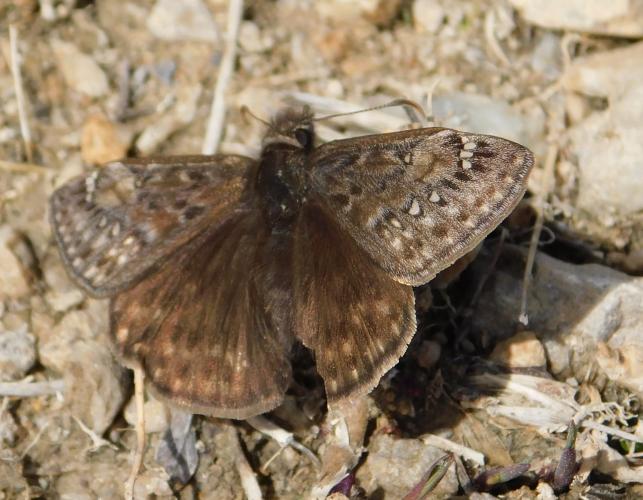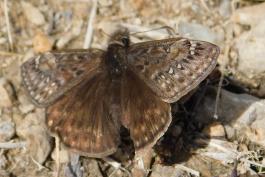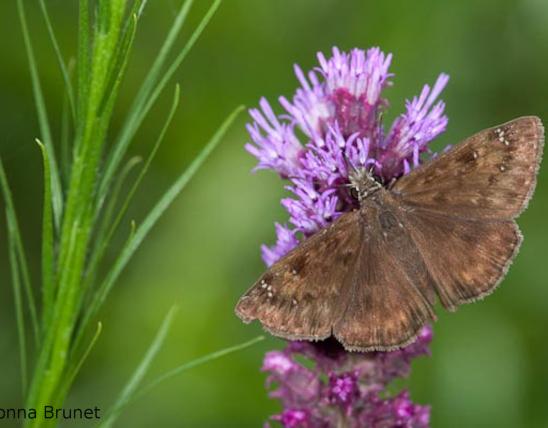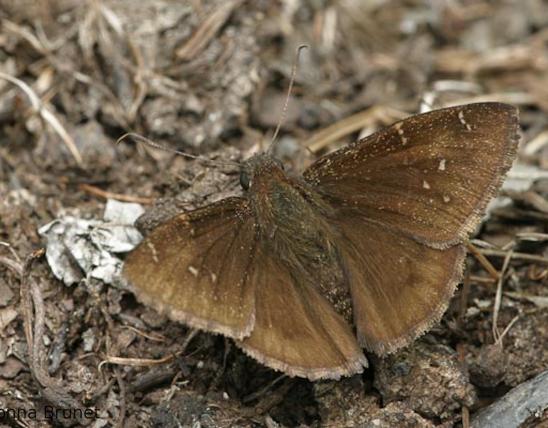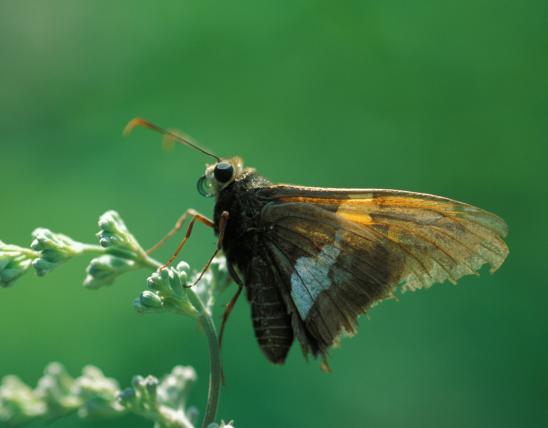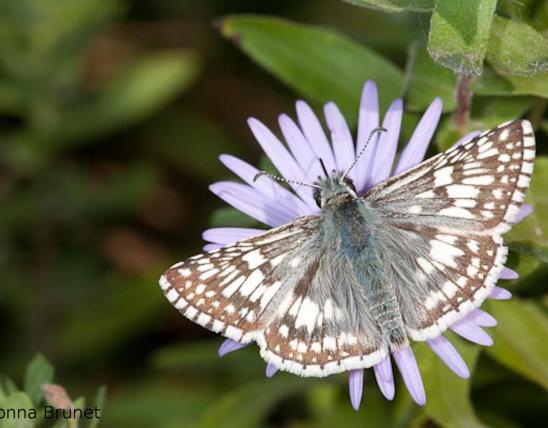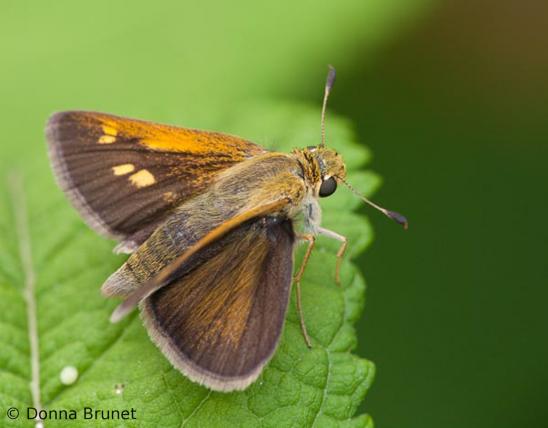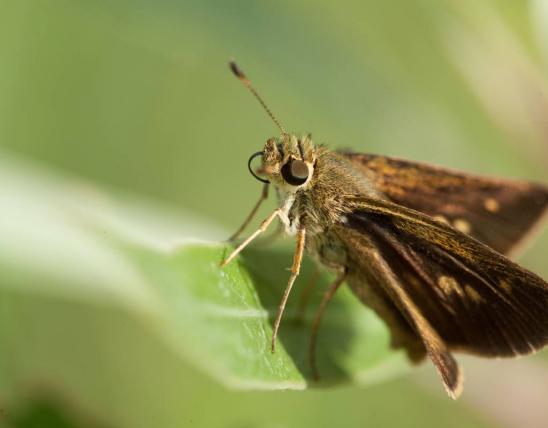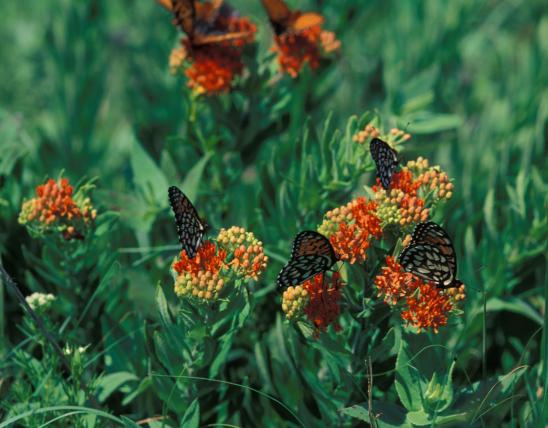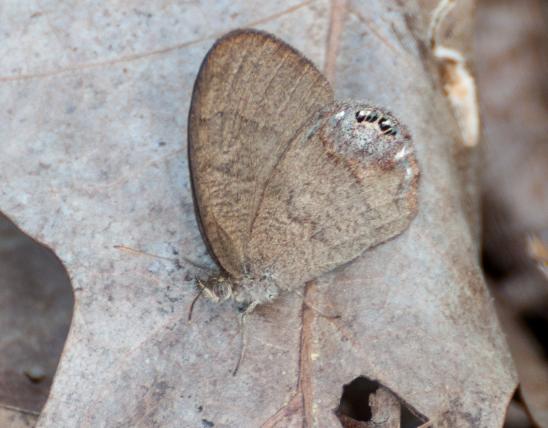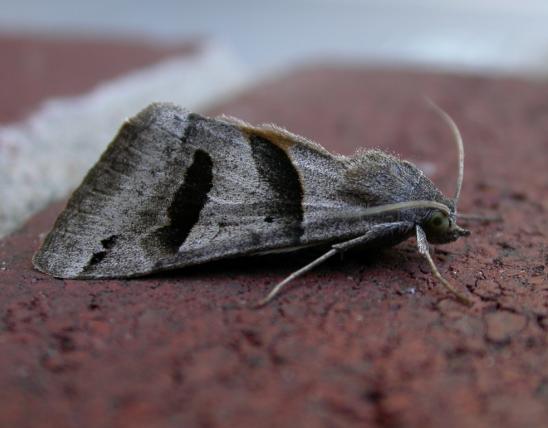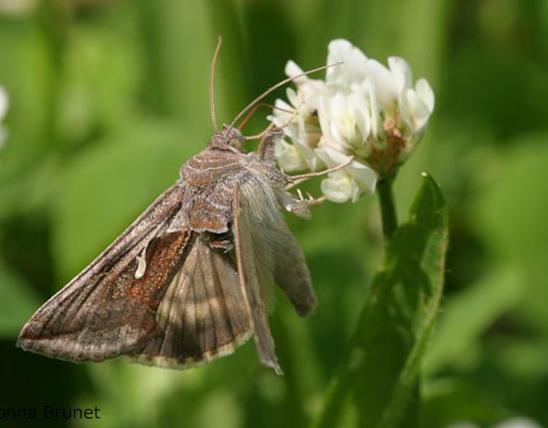
Juvenal’s duskywing is a spread-wing skipper that closely resembles Horace’s duskywing. Unlike Horace’s, it flies only in springtime and has 2 small telltale pale spots on the hindwing underside.
The overall color is brown and gray, with small clear spots on the wings. The markings are very similar to Horace’s duskywing, but Juvenal’s duskywings have 2 small spots on the hindwing underside, near (but not at) the outer tip.
Males have relatively long, whitish hairs on the forewing upperside. Males also have a costal fold on the forewing that contains specialized scales that emit sex scents (pheromones), which attract females. (The costal fold is the leading edge of the forewing, which is folded backward, appearing rolled against the upperside of the wing.)
As a spread-winged skipper, this species most often rests with all four of the wings held out flat to the side.
The larvae (caterpillars) are pale greenish white with a few brown blotches; the head is pale orange brown with 3 bright orange spots on each side. As with other skipper larvae, the heads are large and rounded, and the rest of the body is fairly pudgy. The body is narrowed just behind the head.
Similar species: Horace’s duskywing is very similar. Emergence time is a big clue: although both are present in springtime, Juvenal’s duskywing is no longer present after about mid-May. Specimens found after mid-May will be Horace’s duskywing. During spring, when both species are present, the other key identifiers for Horace’s duskywing are:
- a lack of pale-colored subapical (not quite at the outer margin) spots on the hindwing underside
- a lack of relatively long white hairs on the upperside forewings of males
- the clear spots on the wings are usually more conspicuous in Horace’s than in Juvenal’s.
Wingspan: 1⅜–1¾ inches.
Statewide.
Habitat and Conservation
This is the common duskywing (Erynnis spp.) of Missouri’s spring woodlands. Adults are frequently seen on flowers or congregating at mud puddles and damp ditches.
Food
The caterpillars of Juvenal’s duskywing eat oak leaves.
Adults sustain themselves by drinking nectar from a variety of flowers, including cresses and other spring-blooming mustards, dandelions, wild plum, gooseberry, and redbud. They obtain moisture from mud puddles.
Status
Single-brooded resident; generally abundant.
Life Cycle
Adults fly only in springtime: from March until only about mid-May.
This skipper species has only one brood (generation) a year. They overwinter as fully grown caterpillars and pupate in spring. Shortly after emerging, adult males visit puddles and perch on twigs to intercept passing females. Females lay eggs singly on young leaves of oaks. Caterpillars feed on young leaves of oaks. When not feeding, they take shelter in leaves they have rolled or tied together.
Human Connections
Skippers are grouped in the same superfamily as butterflies, although in the past they have been considered separate from both butterflies and moths. Taxonomists are biologists who study the names of organisms and the relationships among them. Today taxonomists use the tool of DNA evidence to refine our knowledge.
The names of the closely related Juvenal's and Horace's duskywings reference two of ancient Rome's greatest poets and satirists. Juvenal (Decimus Junius Juvenalis, 55–128 AD) and other satiric poets wrote poems mocking and criticizing Roman culture, and humanity itself. Some of the phrases he gave us are “bread and circuses,” a “rare bird,” and “a sound mind and a sound body.” Back in the 1700s and 1800s, several species in this genus received names based in Greek and Roman literature. The scientists who named them grew up at a time when classical literature (ancient Greek and Latin) was considered the foundation for an educated mind.
Ecosystem Connections
The caterpillars are herbivores that graze on vegetation. The adults serve a role in pollination. All stages provide food for predators.
